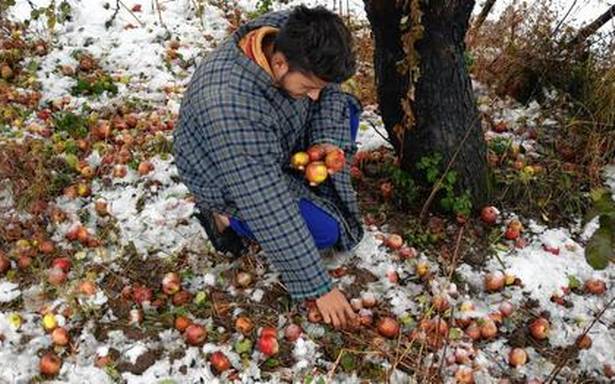How Cinema and Tourism Are Slowly Reclaiming Paradise in the Valley
By: Javid Amin | 21 Aug 2025
Kashmir’s Silverline
The word “Silverline” is more than a poetic metaphor for Kashmir’s present moment—it’s a lens through which we can understand both the fragility and resilience of the Valley’s cinematic and tourism revival. After years of turbulence, curfews, political uncertainty, and sporadic violence, Bollywood filmmakers and domestic tourists are once again setting their sights on Kashmir.
Yet, this return has been anything but linear. Terror attacks, global competition for exotic filming locales, and persistent security concerns continue to create challenges. At the same time, government-backed film policies, renewed marketing campaigns, and local enthusiasm are injecting fresh energy into the Valley.
Kashmir stands at a delicate crossroads: Can it reclaim its historic role as India’s cinematic crown jewel and one of the world’s most enchanting tourist destinations?
This feature explores that question in depth, weaving together business realities, travel opportunities, and the human stories behind the headlines.
Also Read | Kashmir Travel Deals – Family, Friends & Honeymoon Trips Under Budget
Bollywood’s Return: Kashmir on Reel Again
The Cinematic Legacy
For decades, Kashmir was Bollywood’s favorite backdrop. From the snow-clad romance of Kashmir Ki Kali (1964) to the iconic song sequences of Silsila (1981), the Valley symbolized cinematic grandeur. Producers flocked to Srinagar’s Dal Lake, Pahalgam’s meadows, and Gulmarg’s slopes, making the region synonymous with romance and natural beauty.
But by the late 1980s, rising militancy shut down that dream. Film crews stopped arriving. Many young Kashmiris, who had once found seasonal employment as extras, guides, and crew assistants, were left with shattered livelihoods.
The 2020s Revival Attempt
In recent years, Kashmir began staging a quiet comeback. The 2021 J&K Film Policy—offering subsidies, single-window clearances, and security support—attracted filmmakers. High-profile projects, including web series and music videos, were announced across Pahalgam, Gulmarg, Sonmarg, and Srinagar.
Actors and directors once again filled hotel rooms. Line producers in Srinagar reported a rise in bookings. Local taxi unions and handicraft sellers noted a small but significant uptick. It seemed that the Valley was finally on the cusp of reclaiming its cinematic crown.
The April 2025 Setback
Then came the April 2025 terror attack in Pahalgam, a chilling reminder of Kashmir’s fragility. In its aftermath:
-
Several production houses cancelled shoots.
-
Others relocated projects to Manali, Leh, Switzerland, and Turkey.
-
Insurers began demanding higher premiums for Kashmir shoots.
-
Local artists and technicians were left scrambling for work.
As one Srinagar-based line producer put it:
“We had a dozen projects lined up for spring. Within days, half of them vanished. We felt the dream slipping again.”
Resilient Return
Yet, not all was lost. By mid-2025:
-
Bollywood director Danish Renzu returned to shoot in Srinagar and Baramulla.
-
South Indian film crews began exploring Gulmarg and Sonmarg.
-
Ad-makers and music video directors resumed scouting locations.
This slow trickle is what industry insiders call the Silverline effect: the recognition that while setbacks are inevitable, the Valley’s pull is too strong to resist for long.
Also Read | Affordable Kashmir Honeymoon Packages – Romantic Deals You Can’t Miss
Tourism Reawakens: Beyond Cinema
Numbers on the Rise
Tourism is the other half of Kashmir’s revival story. Despite political turbulence, 2023 and 2024 recorded record-breaking domestic tourist arrivals. Houseboats on Dal Lake filled up. Gulmarg’s ski slopes were packed. Tulip Festival in Srinagar drew crowds that rivaled pre-2019 levels.
By mid-2025, industry reports suggest:
-
Domestic arrivals are growing steadily, though foreign tourist inflow remains sluggish.
-
Religious tourism to shrines like Amarnath and Vaishno Devi has seen a boost.
-
Adventure tourism—skiing, trekking, river rafting—is gaining new takers among young Indians.
Promoting New Destinations
Actor Lalit Parimoo, known for his nuanced roles in Bollywood, recently praised J&K’s film policy and urged filmmakers to look beyond Gulmarg and Pahalgam. He highlighted gems like Bhaderwah in Doda district, often called “mini-Kashmir,” with its rolling meadows and untouched pine forests.
The administration too is pushing campaigns that emphasize lesser-known valleys and eco-tourism: Gurez, Lolab, Bungus, and Warwan. If safety stabilizes, these areas could ease tourist congestion and spread economic benefits more evenly.
Hospitality Sector’s Response
The Valley’s hospitality industry has invested heavily:
-
New boutique hotels have opened in Srinagar and Pahalgam.
-
Homestays in offbeat villages now cater to backpackers and slow travelers.
-
Luxury chains like Taj and Radisson are expanding presence, signaling long-term optimism.
Also Read | Beyond Gulmarg & Pahalgam: Hidden Magical Towns in Kashmir to Explore Year-Round
Challenges Persist: Shadows over the Silverline
Despite signs of revival, multiple challenges continue to cast long shadows:
01. Security Concerns
-
Even isolated incidents, like the Pahalgam attack, ripple through global media, undoing months of promotion.
-
Foreign embassies often issue travel advisories, discouraging international arrivals.
02. Bureaucratic Hurdles
-
Filmmakers still complain about slow permissions and changing regulations.
-
Local producers argue that while incentives exist on paper, ground-level support is inconsistent.
03. Local Artists and Crew Struggles
-
Many Kashmiri musicians, technicians, and junior artists remain underemployed.
-
Projects often bring crews from Mumbai/Hyderabad, leaving locals with only marginal roles.
04. Seasonality and Infrastructure
-
Harsh winters limit filming and tourist activity.
-
Power cuts, internet disruptions, and road closures frustrate both filmmakers and travelers.
As one hotelier in Gulmarg remarked:
“We live in a paradox—Kashmir is the most beautiful location, but the most difficult to plan for.”
Also Read | Gurez Valley Reopens: Hope Returns to Kashmir’s Border Gem
The Silverline: Resilience and Reinvention
Despite these hurdles, Kashmir’s cultural and tourism industries have displayed remarkable resilience.
-
Filmmakers are adapting by shooting in controlled locations, hiring security consultants, and using drones for wide landscapes instead of large crews.
-
Local entrepreneurs are innovating with film-themed cafes, cinema festivals, and heritage tours.
-
Government departments are aligning film promotion with tourism marketing—turning every Bollywood shoot into a potential tourism campaign.
Most importantly, Kashmiris themselves remain hopeful. Taxi drivers, guides, hoteliers, and artisans see the return of tourists and film crews as more than business—it’s about recognition, pride, and dignity.
The Road Ahead: Can Kashmir Reclaim Its Crown?
The question remains: Will Kashmir once again become the “Cinematic Switzerland of India”?
The answer lies in a three-pronged approach:
-
Sustained Security Measures – Ensuring consistent safety to rebuild global confidence.
-
Policy Consistency – Streamlining permissions, reducing bureaucratic hurdles, and ensuring subsidies reach producers.
-
Local Integration – Empowering Kashmiri artists, technicians, and entrepreneurs to benefit fully from the revival.
If these align, Kashmir could become not just a film destination but a creative economy hub, attracting OTT productions, global collaborations, and niche tourism segments like wellness retreats, eco-tourism, and film festivals.
Also Read | You Dream, We Plan — The Complete Wedding Experience by Kashmir’s Finest Wedding Planners
Bottom-Line: The Silverline Shines Through
Kashmir’s story is not just about landscapes—it’s about resilience. The Silverline is visible in every film crew that braves uncertainty to shoot in Gulmarg, in every tourist who chooses Dal Lake over Dalhousie, and in every Kashmiri artist who waits for the next big break.
Yes, challenges remain. But if history has shown anything, it’s that paradise has a way of reclaiming itself. With coordinated efforts, the Valley can indeed step into the limelight again—this time not just as Bollywood’s dreamscape, but as a global symbol of revival, creativity, and hope.



